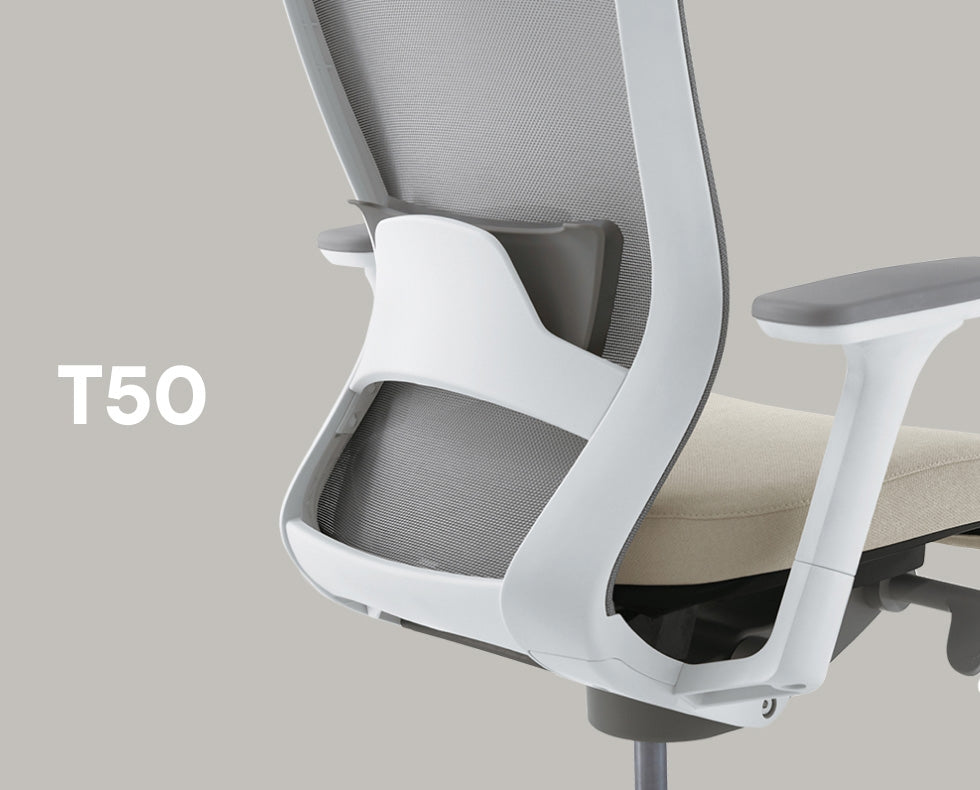Remote work offers freedom, flexibility, and extra sleep — but your body might be paying a quiet price. Ever felt achy by lunchtime? Blame your workspace.
Home office ergonomics isn’t just fancy jargon. It’s your key to pain-free, productive days. The problem? Many remote workers make small but damaging ergonomic mistakes — often without realising.
So, let’s shine a light on the everyday setup blunders people make and how to fix them with minimal fuss.

1. You're Sitting in the Wrong Chair
That wooden kitchen chair? It wasn’t built for eight-hour Zoom marathons. And don’t even get me started on working from the lounge or your bed.
Without proper back support, your spine slouches and your muscles overcompensate. Before long, discomfort creeps in like an uninvited guest.
You need a seat that gets you — something that supports your posture without making you feel like a robot. We believe you’ve already heard about ergonomic chairs.
A good example? Sidiz. Their designs blend comfort with structure, helping your back stay upright, supported, and relaxed. Think posture without pain.
2. Your Screen Is Too Low (Or Too Far)
Stacked books or laptop on your lap? Classic error. If you’re constantly looking down or stretching your neck forward, you're in ergonomic danger territory.
Your screen should meet your eyes without effort. If you’re nodding like a bobblehead, it’s time for a change.
Use a laptop riser, external monitor, or even a shoebox in a pinch. Aim for eye level and arm’s length distance.
This one simple shift can save your neck, reduce headaches, and help you sit straighter — without even trying.
3. Your Keyboard and Mouse Are Poorly Placed
Your wrists shouldn’t float mid-air or tilt like a diving board. And if your mouse is doing the long-distance shuffle — that’s a no.
Your arms should rest comfortably at your sides, elbows bent at around 90 degrees. Your wrists? Flat and relaxed.
If you type with bent wrists or reach too far, strain builds over time. Hello, carpal tunnel. Not fun.
Position your mouse close to the keyboard. Consider a wrist rest if needed. Comfort is key when it comes to home office ergonomics.
4. You’re Forgetting to Move
Here’s the truth — no chair, not even the best office chairs, will fix everything if you sit like a statue all day.
Human bodies are made to move. We’re not designed to stay still for hours, even in a perfect posture.
Stretch, walk, reach for a water refill, or just stand up. Do it regularly. Set a timer if needed.
Bonus? Movement boosts circulation, clears your mind, and can even spark better ideas. You might find your best thoughts while stretching.
5. Your Lighting Is Messing with Your Eyes
Working in a dim cave or under a harsh ceiling light? That’s an eye strain waiting to happen — and your brain won’t like it either.
Natural light is gold. If possible, face a window side-on to avoid screen glare. No window? Use a warm, adjustable lamp.
Good lighting keeps your eyes relaxed, especially when staring at spreadsheets or bouncing between tabs.
It also helps maintain your energy throughout the day. Nobody does their best work under flickering lights or shadows.
6. Your Feet Are Dangling
Crossing your legs all day or letting your feet hang? That messes with everything from your hips to your lower back.
Feet should sit flat on the floor. If your chair’s too high, grab a footrest — or even a shoebox works.
This simple fix supports your posture, improves blood flow, and helps your back stay neutral without constant effort.
It might not seem like much, but your spine will thank you.
7. Your Desk Is the Wrong Height
A dining table may look fine, but its height could be a silent saboteur. Too high, and your shoulders tense up. Too low? You hunch.
Your desk height should let your arms rest naturally, elbows bent and wrists aligned.
If your desk is fixed, adjust your office chair accordingly and add a footrest if needed.
Better still, a sit-stand desk allows for flexibility — stand when you need energy, sit when you want to focus.
8. You’re Ignoring Document Placement
Looking down at papers or twisting to read handwritten notes? That’s a neck cramp in the making.
Keep documents at eye level or just below. Use a stand or prop them between your keyboard and screen.
If you're toggling between screens and papers often, this small change can reduce neck pain significantly.
It also improves focus — less bobbing, more doing.
9. Your Workspace Is Full of Distractions
Ergonomics isn’t just about chairs and screens — it’s also mental. Noise, clutter, and chaos strain your mind, and eventually, your body too.
A cluttered desk means more reaching, twisting, and awkward angles. A noisy room means poor focus and raised stress levels.
Create a clean, quiet work zone. Keep essentials within arm’s reach. Use noise-cancelling headphones or soft background music to zone in.
The result? A calmer mind and a healthier body — both crucial for remote work success.
10. You're Not Using Helpful Accessories
No wrist pad? No monitor stand? You’re missing out. The little things matter when you’re crafting an ergonomic sanctuary.
Even the fanciest ergonomic chairs can’t do it all. Accessories fill in the gaps — from lumbar cushions to anti-fatigue mats.
Test what works for you. Some love standing desks. Others swear by vertical mice. Your body knows what feels right.
For instance, Sidiz chairs include customisable support, which eliminates the need for many add-ons. One chair. Less clutter.
11. Your Setup Isn’t Personalised
Copying your co-worker’s setup might seem smart, but ergonomics isn’t one-size-fits-all. Your body needs its own tailored workspace.
Are you tall? You’ll need more screen height. Shorter? Lower the seat and add a footrest. Got long arms? Adjust your reach zone.
Everything should revolve around you. Trial and error is part of the process — listen to what feels off.
Make micro-adjustments weekly and be curious about your comfort. Your future self will thank you.
12. Your Clothes Are Working Against You
Bet you didn’t see this one coming. Tight jeans or stiff collars can restrict movement and subtly affect how you sit.
Clothing that pinches or needs constant adjustment messes with your natural posture. It makes you fidget and slump.
Soft, flexible layers are ideal. Avoid belts that dig in or shirts that restrict shoulder movement.
Comfortable clothes = better movement = better posture. It’s an underrated ergonomic upgrade that costs nothing.
We often don’t realise how much our home setups are hurting us — until it’s too late. Achy backs, stiff necks, sore wrists — they all add up.
Small daily habits shape our physical health, especially when remote work becomes the norm. That’s why investing in home office ergonomics matters more than ever.
Get the basics right — posture, movement, lighting, and support. Tools like ergonomic chairs or supportive accessories aren’t luxury items. They’re investments in wellbeing.



